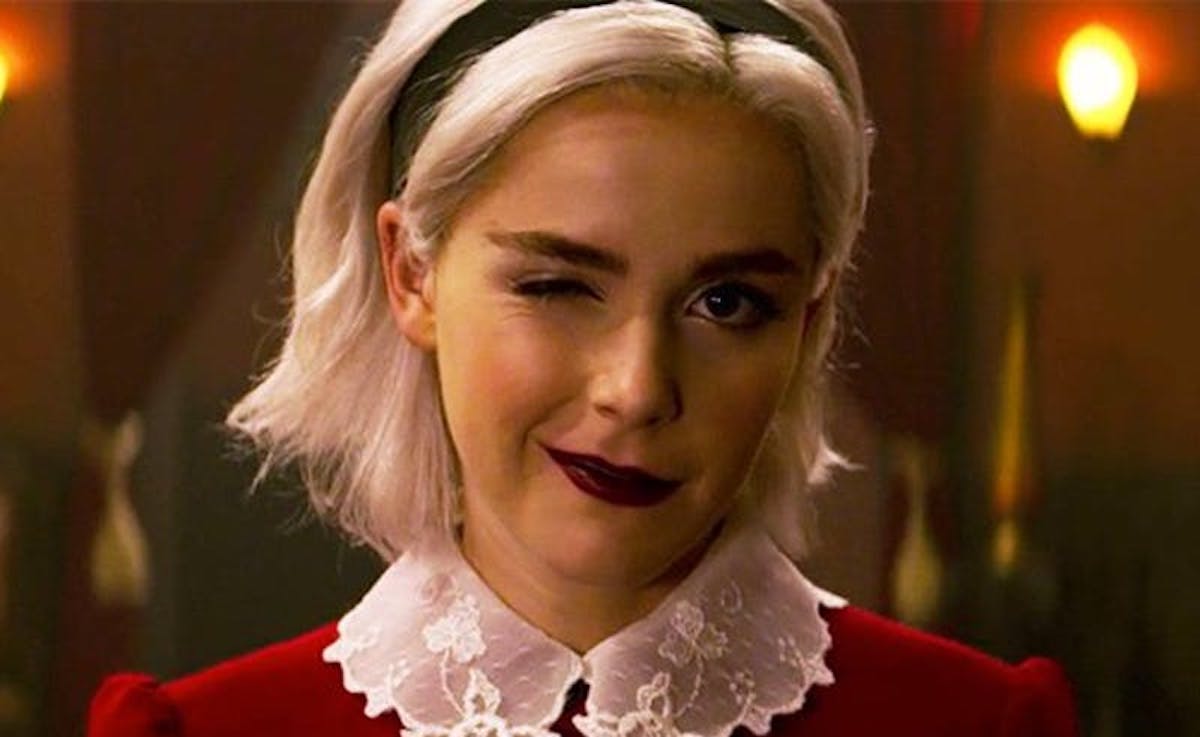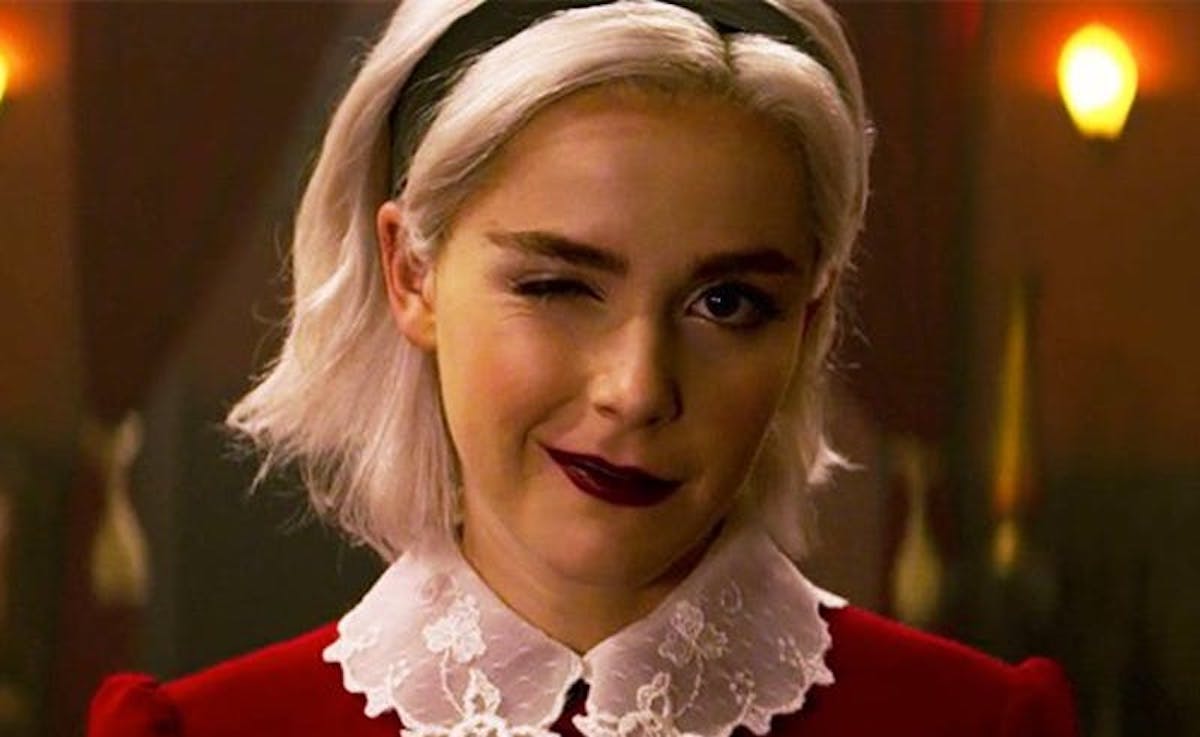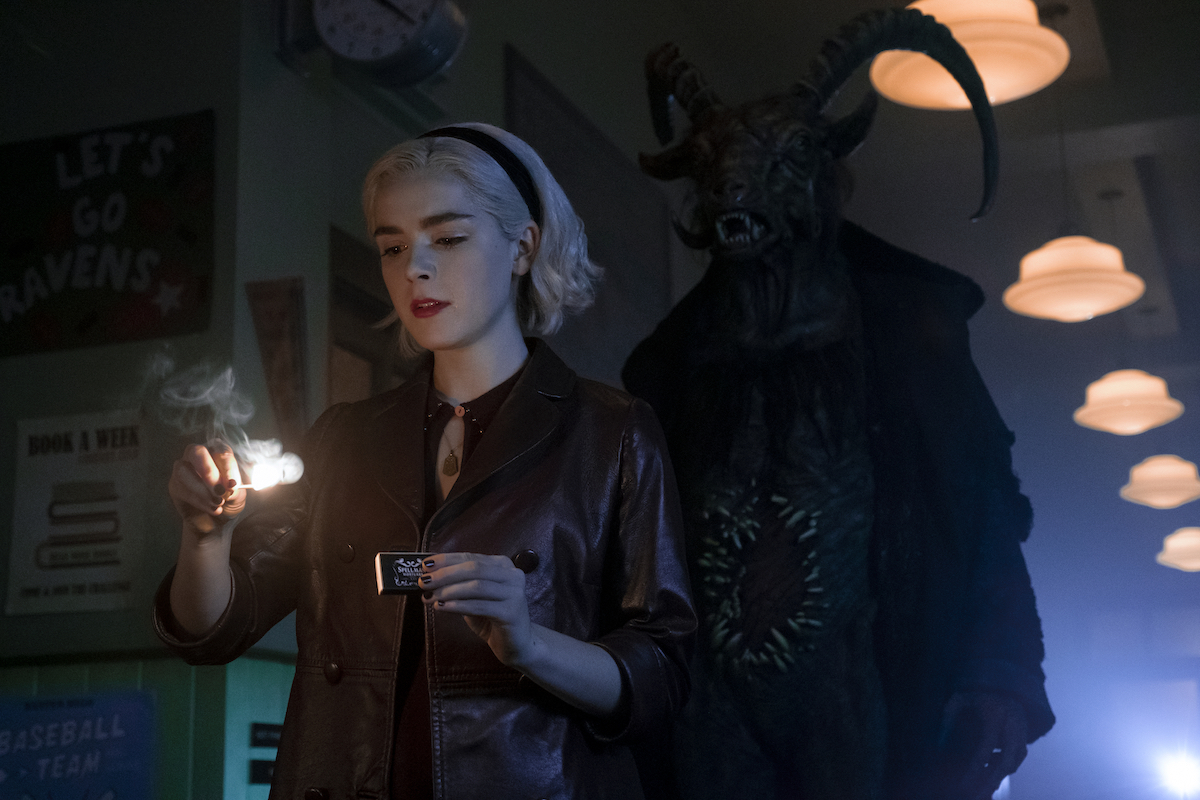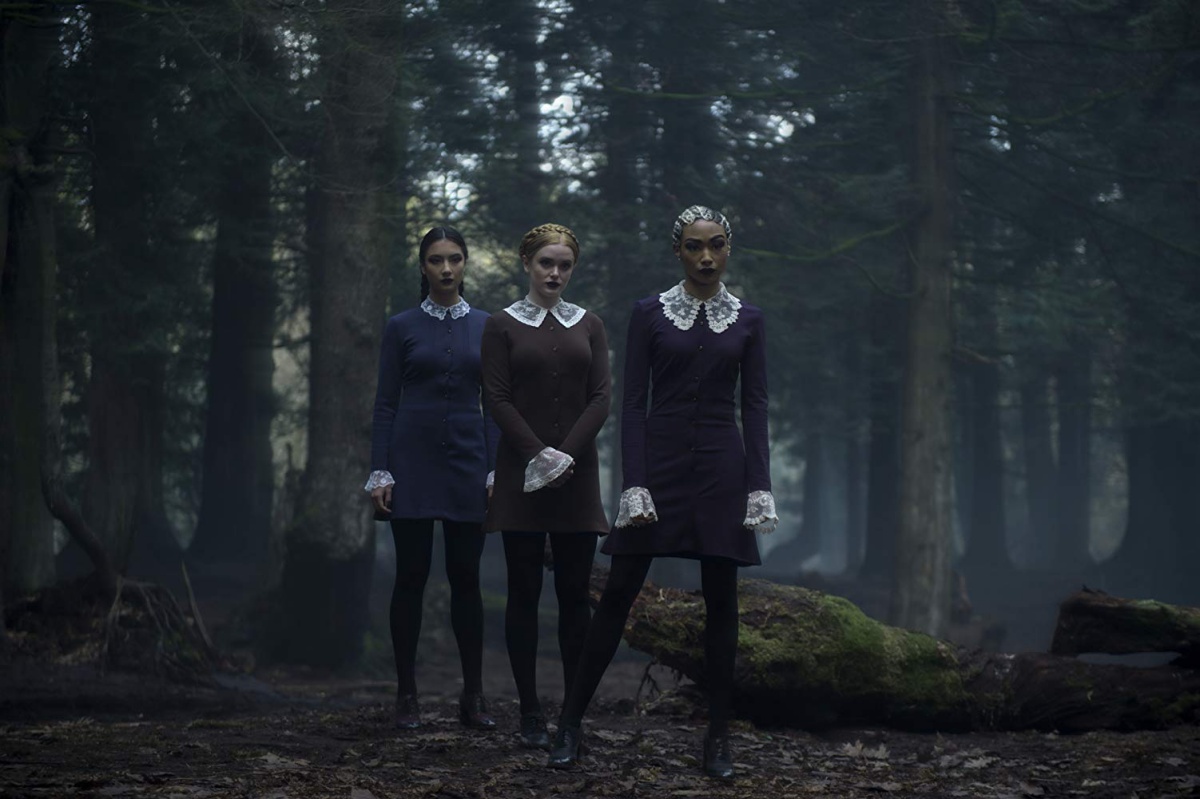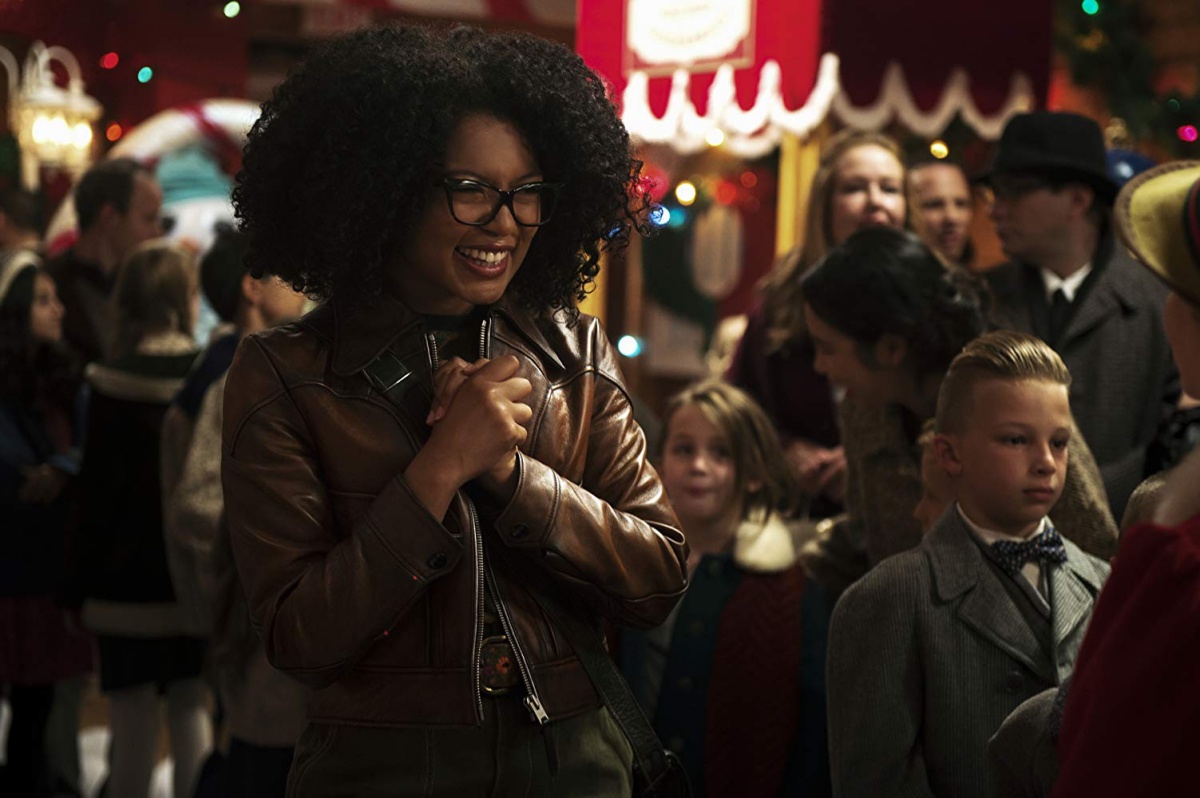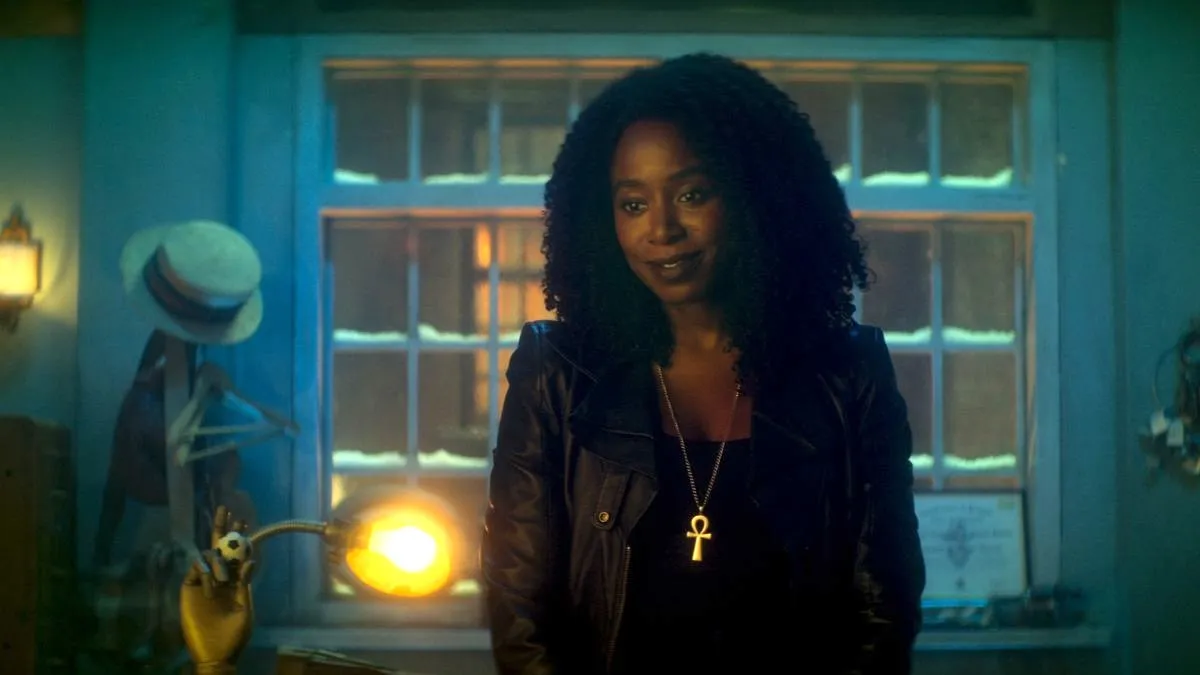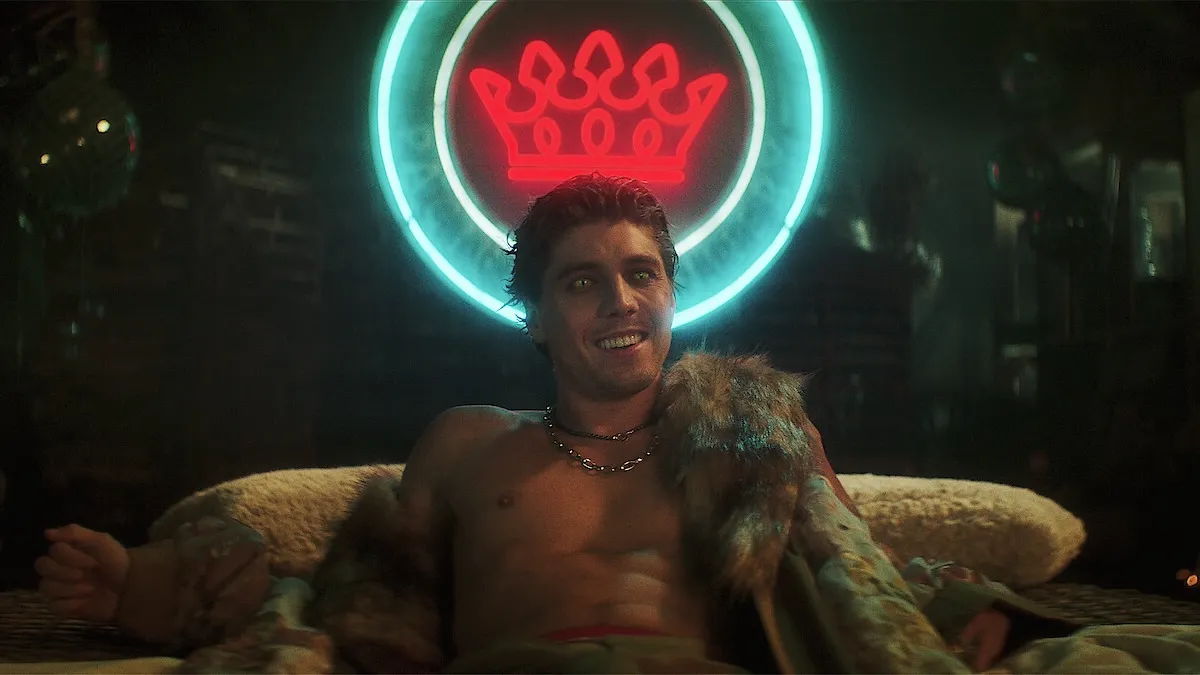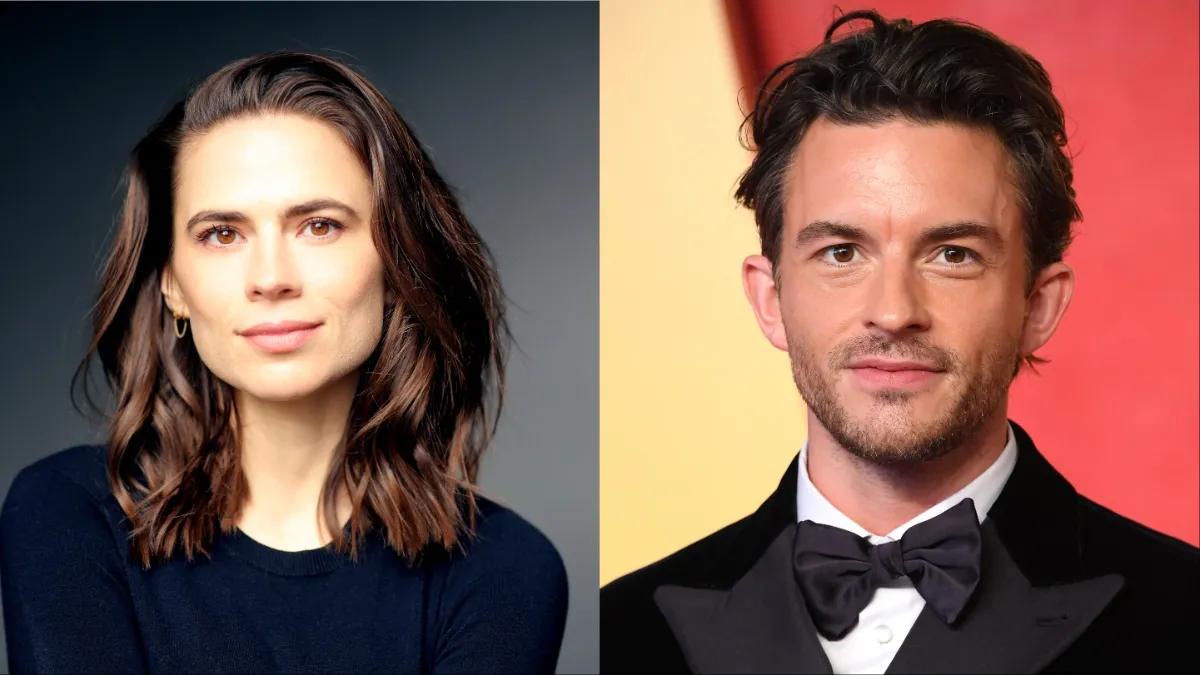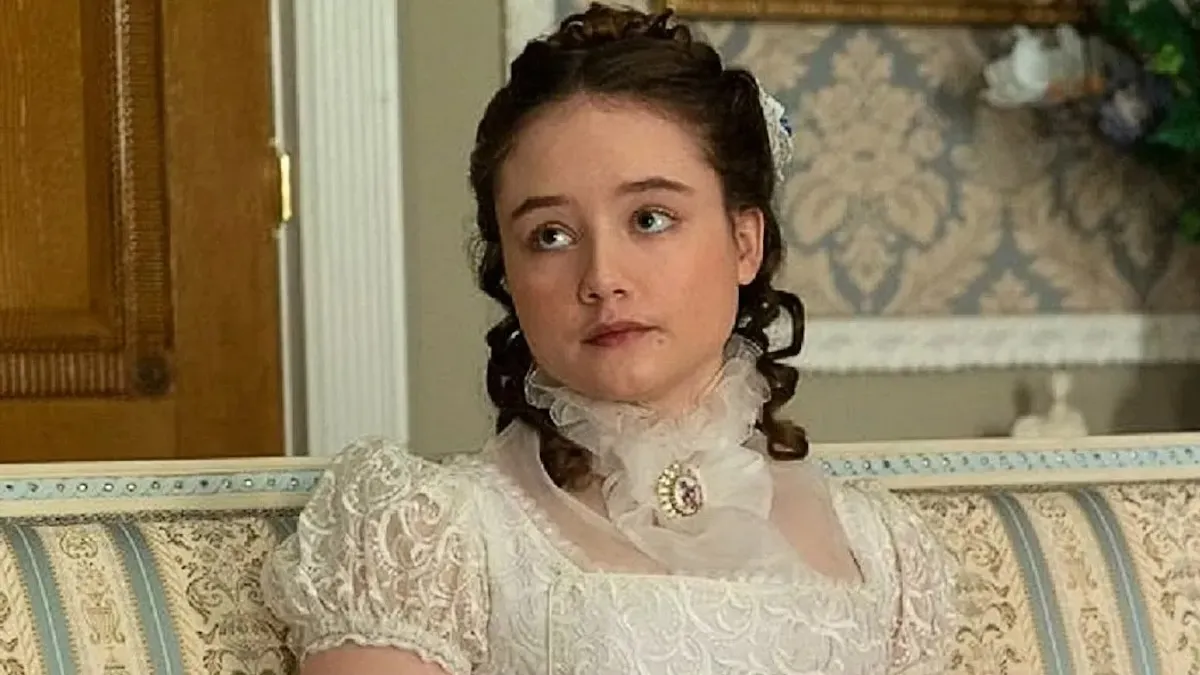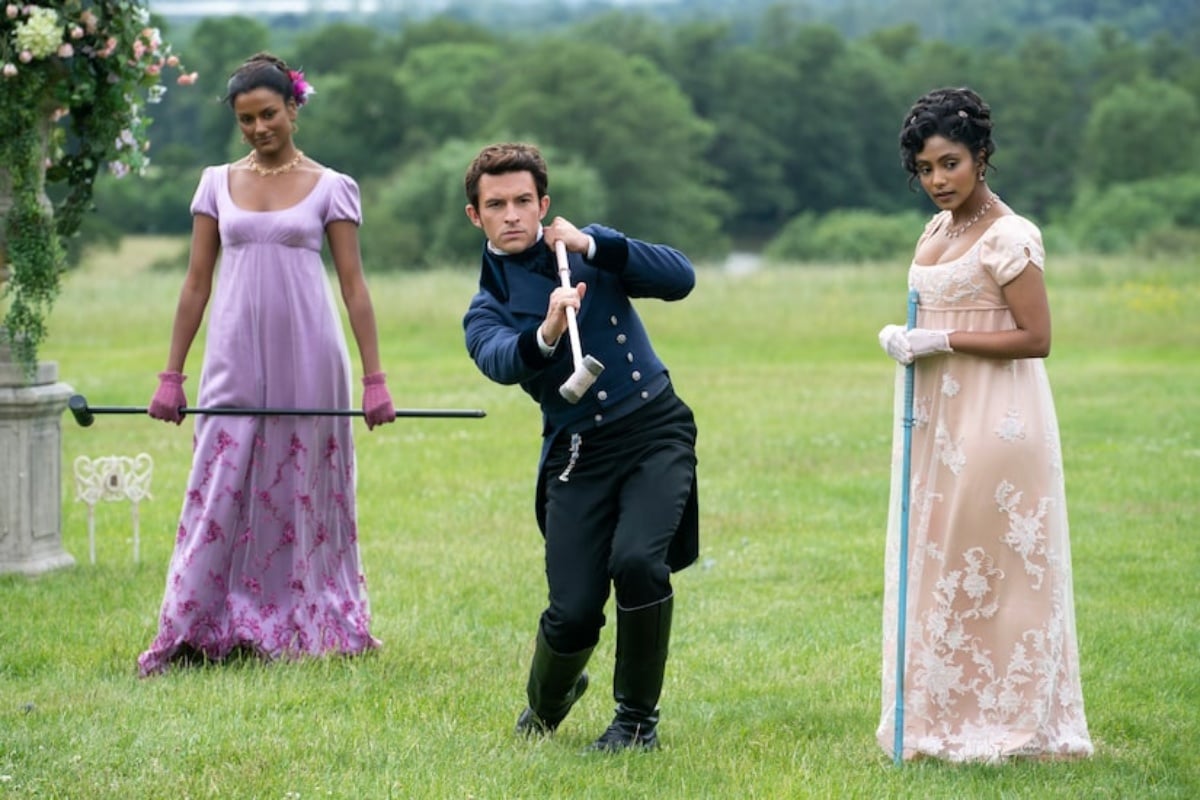For all of the triumphs of Netflix’s Chilling Adventures of Sabrina—an unapologetically feminist female protagonist, a willingness to tackle issues that feel painfully relevant, an on-point retro Satanist aesthetic—the show also often misses the mark. The sometimes problematic representation of its queer and POC characters, plot holes bigger than Faustus Blackwood’s ego, and Salem the cat’s reduction to absent familiar are some of Sabrina’s most glaring failures, and underpinning them all is the lack of a clearly established magic system.
Before the recently released Part 3, Greendale’s witches and warlocks were governed by the Church of Darkness, of which the former Church of Night was a faction. Its tenets are cobbled together from New Age spiritual practices like Wicca and Thelema, and a straight-up inversion of Christianity—which mostly amounts to adding “Dark,” “Anti-,” or “Satanist” before any vaguely Christian concept. Its sole purpose is to exult the Dark Lord, whom all witches and warlocks are bound to after their Dark Baptism (see?), but even within a body that seemingly rejects the mortal establishment, some things stay the same—namely, the cis white heteropatriarchy’s grip on, well, everything.
Sabrina, her family, and her friends rightly rebel against this grip, both in the mortal world and the magical one. In Part 3, the female empowerment seeds sowed in previous seasons finally start to grow. Aunt Zelda embraces the role of High Priestess of the coven—reborn as the Order of Hecate—Sabrina (sort of) rules over Hell, and former mean girl Prudence finally finds purpose beyond highlighting Sabrina’s moral superiority.
We even see witches and warlocks take a class or two at the Academy of Unseen Arts (a.k.a. Satanist Hogwarts)—except for Sabrina, obviously. With such an attendance track record at both her schools, it’s hard to believe that Greendale social services have yet to pay the Spellmans a visit. And yet, that doesn’t mean that Part 3 erases the many magical inconsistencies of the previous incarnations. If anything, with the addition of the “old ones,” the introduction of Hell’s hierarchies, and the Avengers: Endgame-style time travel, it muddles things even further.
The main issue with CAOS’s magic is that we’re never really shown how it works—what are the rules, the limitations, the cost? When these things are mentioned, it’s usually in a throwaway manner, and they never have any real consequence on any of the characters.
This is most evident in Sabrina, who can cast memory-wiping spells on her mortal boyfriend and redefine traditional familiar-witch relationships before she even attends one class at the Academy of Unseen Arts. Yet, despite being raised by two card-carrying members of the Church of Night, she doesn’t seem to know the first thing about its traditions.
And so, Sabrina spends Parts 1 and 2 frowning at the likes of the Feast of Feasts and the Witches Council until her long-suffering family offer up an explanation. Then, it’s off to pull a far-fetched (yes, even for a world where time-traveling golden eggs laid by the Loch Ness monster are a thing) yet convenient caveat or spell out of thin air.
Perhaps the worst part is that the purpose of Sabrina’s selective witchcraft memory, up until this point, seems to be purely to deliver exposition. It has no bearing on Part 2’s big reveal that Sabrina is, in fact, the Dark Lord’s spawn/bride. In fact, fully exploring the extent of her abnormal magical abilities or even hinting at how unusual they are earlier would have made that reveal all the more effective. Harry Potter had a rare gift for flying, but we still had to watch him learn the spell that summoned the broom. The Halliwell sisters were the Charmed Ones, but we still saw them consult the Book of Shadows on the regular.
The problem is, we don’t really know what stage Sabrina’s abilities are meant to be in. Despite her reluctance to fully embrace her witchy nature in Part 1, Sabrina is enrolled at the Academy of Unseen Arts at the beginning of Part 2, yet we barely see her attend a class. When we do, she seems to be on the same level as bad boy warlock Nick Scratch and the Weird Sisters, despite the fact that they are older and theoretically more experienced.
By the time Sabrina starts resurrecting people left, right and center, it doesn’t feel like the natural culmination of her magical journey or like she’s fulfilling her destiny as a Morningstar, but rather, just another shiny ingredient blindly thrown into an already overflowing cauldron.
“You are racking up a cosmic debt the like of which the world’s never seen,” Aunt Hilda chides Sabrina once she finds out about the resurrections. If that’s the case, surely the entire Church of Night must be in cosmic bankruptcy.
The cauldron only overflows further in Part 3. As cool as it is to watch a Pagan carnival roll into town and Sabrina take on Hell in her cheer getup, the magic continues to make no sense. We only now learn that psychic trails are possible to follow, that the Dark Lord can only be held by human flesh but that a handful of upside-down symbols in a freezer can hold his daughter, and that magical beings are still somehow obsessed with Harvey Kinkle, who makes watching paint dry sound fun.
There’s no denying there’s a lot of value in Sabrina’s raw magical energy—few things are more satisfying than watching grown men and demons cower in fear before rebellious teenage girls—but Sabrina’s interactions with Father Blackwood, the Church of Darkness, and Satan’s court only scratch the surface of what could be a really interesting exploration of power and empowerment.
Things only get even murkier when you look at how the show’s queer and POC characters interact—or don’t—with magic. The show may be positioning itself as a feminist manifesto, and Sabrina may be a self-proclaimed feminist, but intersectionality often goes out the window along with Sabrina’s Academy of Unseen Arts class schedule.
Prudence, Ambrose and Sabrina’s best friend Roz are three of the show’s most notable POC characters, while her friend Theo is trans. Before Part 3, their relationship to magic was only ever explored in the context of their relationship to Sabrina—and often just to reiterate her status as an Ally™.
Granted, Part 3 does give them a little more to do other than further Sabrina’s character development or reiterate how much better her worldview is. Roz even becomes popular without Sabrina having to cast a spell to get her there—praise Satan Lilith Hecate! There’s also the introduction of Mambo Marie, who was instrumental in saving the coven from the Pagans. Hopefully we won’t have to wait three seasons for her to get a worthy storyline.
“Relax, it’s only magic,” you may be thinking. But quoting The Craft only serves as a reminder that it’s possible for a fantasy teen drama to be gloriously camp and fun to watch, while also literally and figuratively empowering its characters. Here’s hoping CAOS Part 4 can finally cast a little substance into its spooky style.
Want more stories like this? Become a subscriber and support the site!
—The Mary Sue has a strict comment policy that forbids, but is not limited to, personal insults toward anyone, hate speech, and trolling.—



